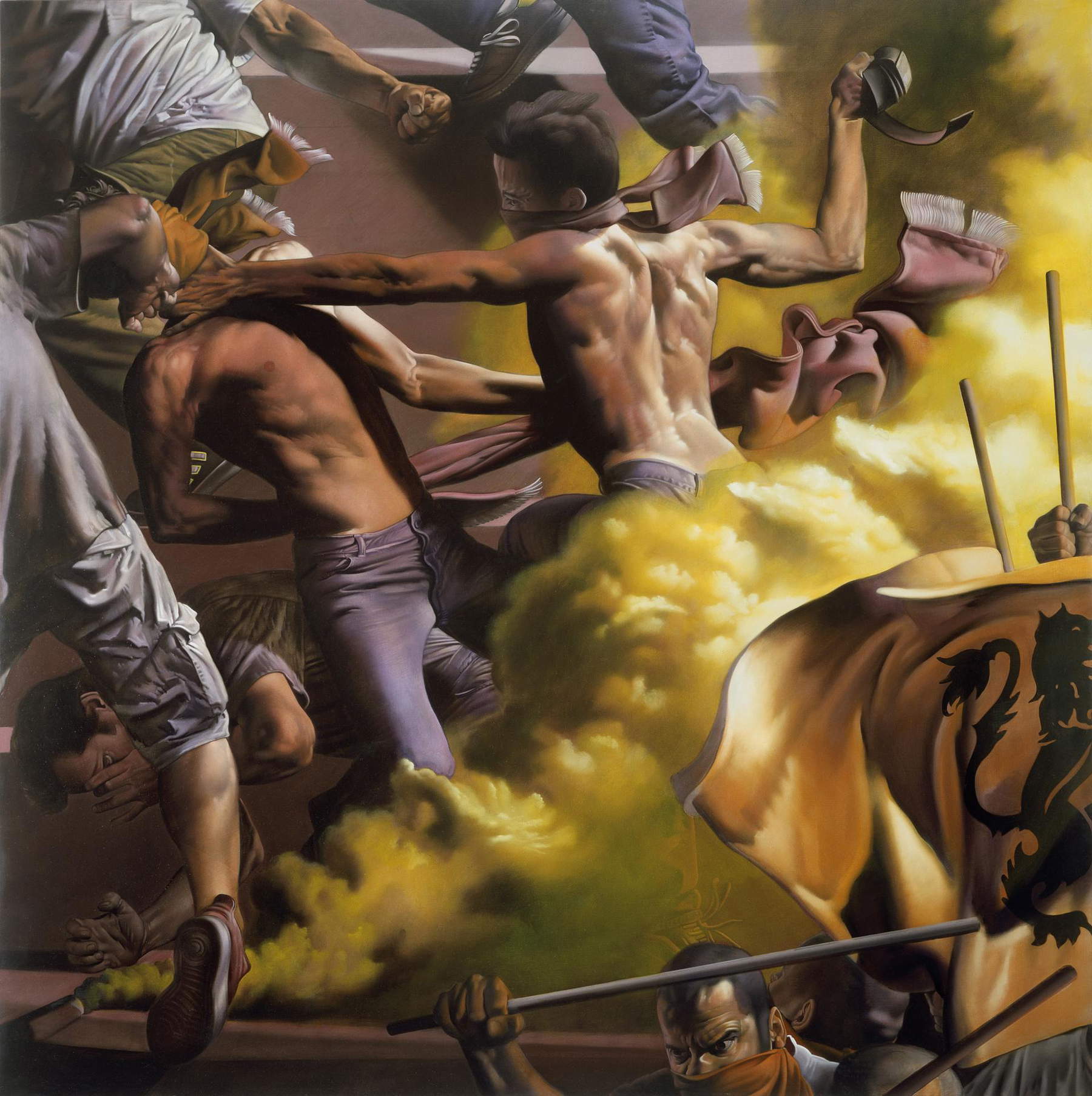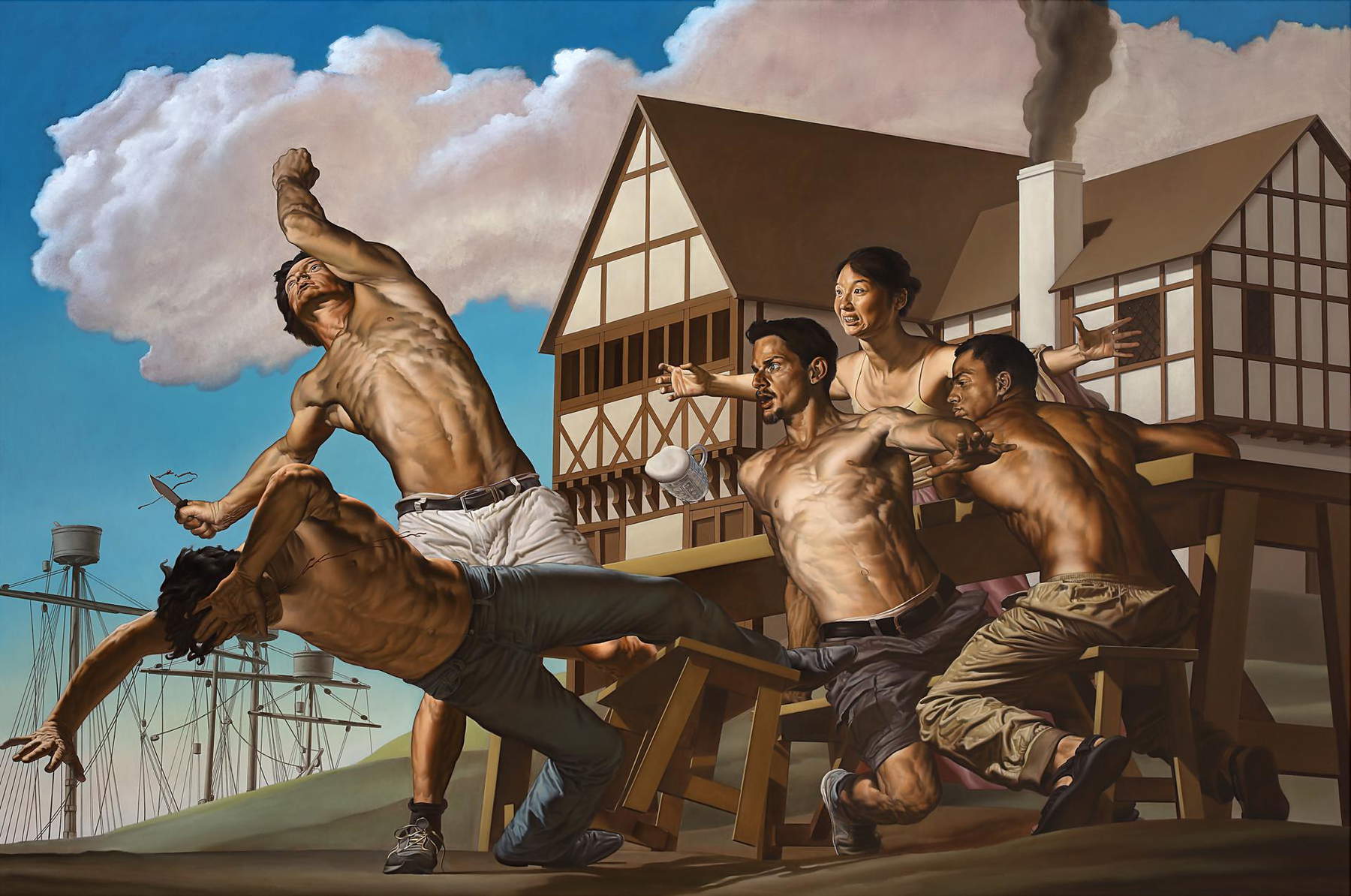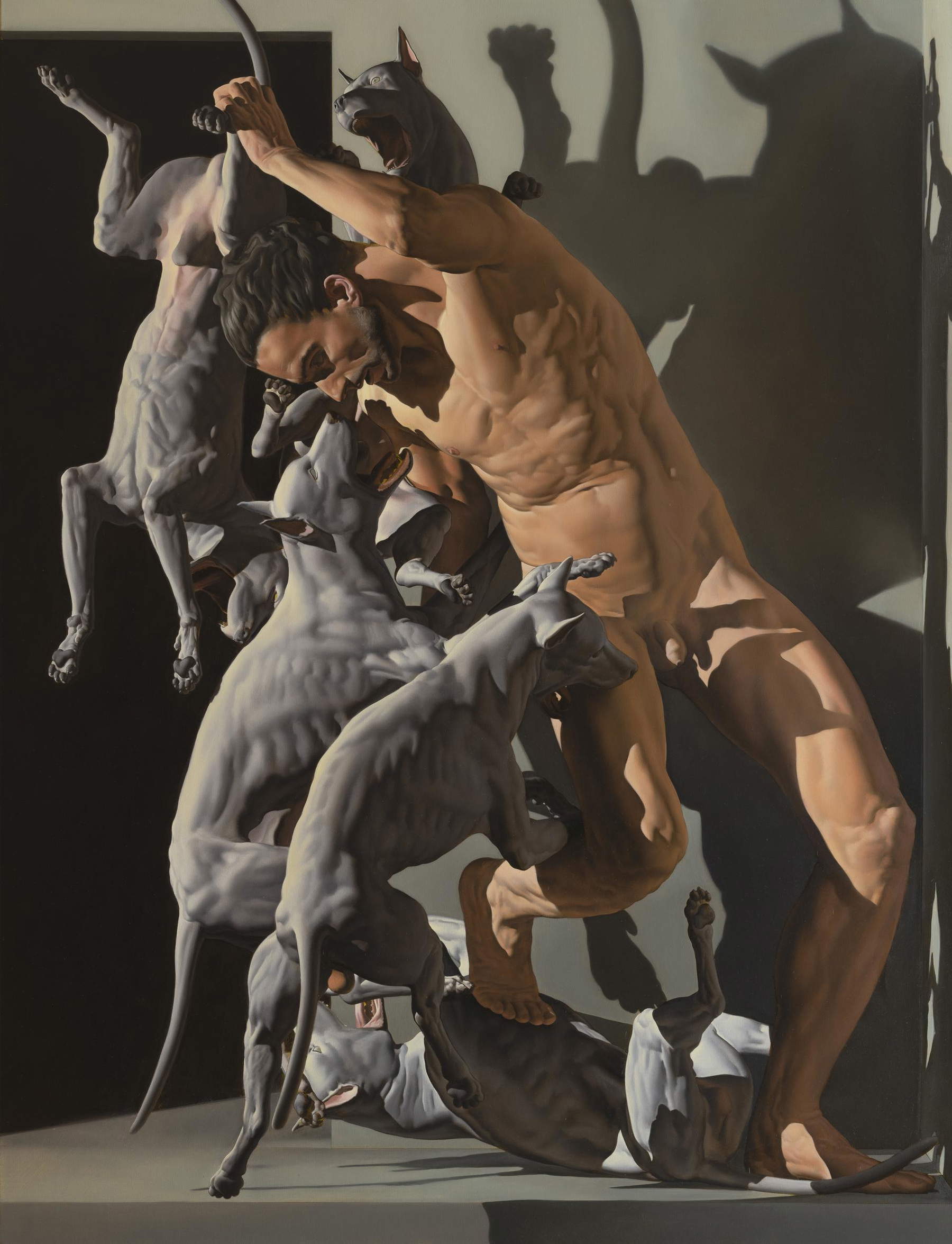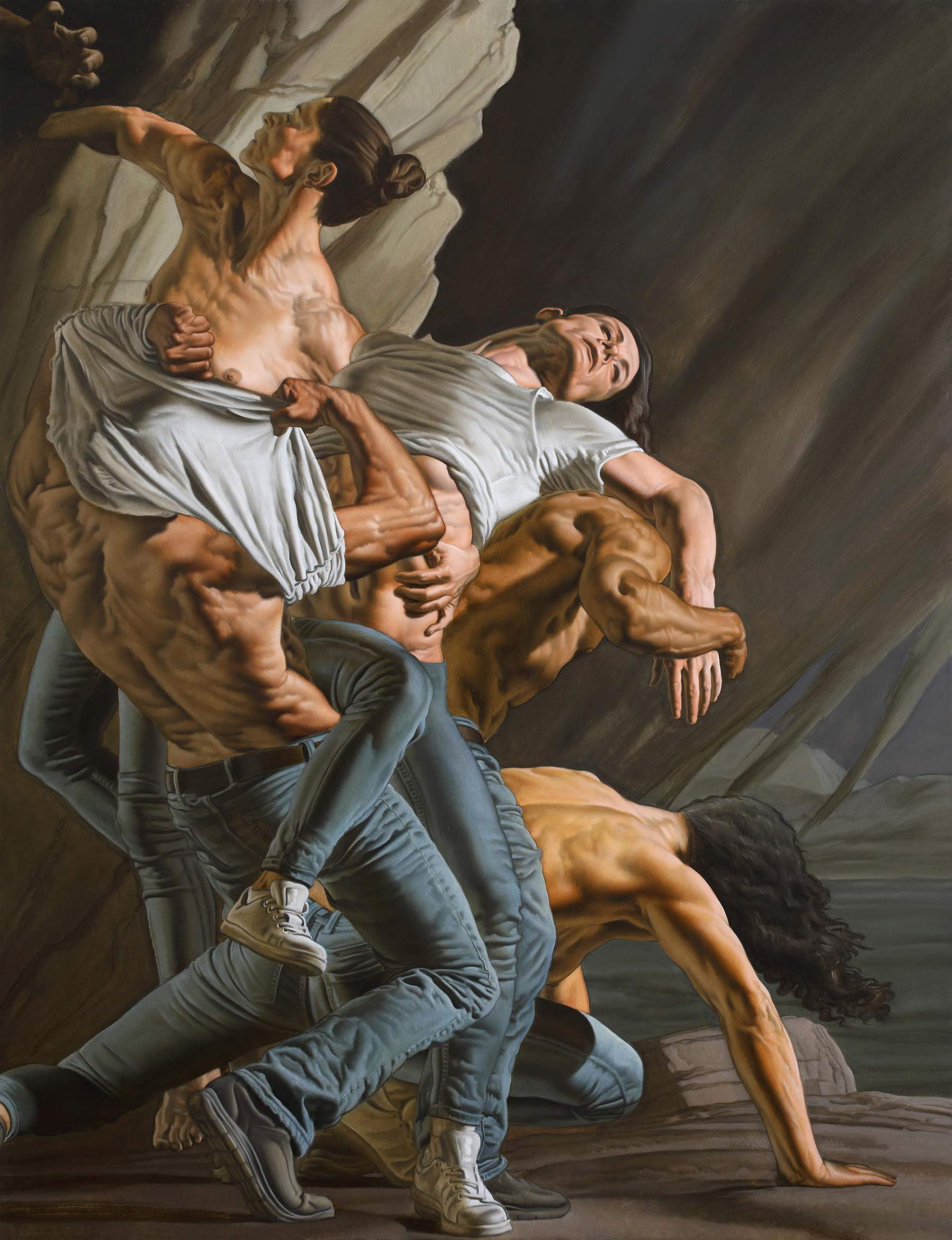A journey through the art of Nicola Verlato in Imola: anthological exhibition at Museo San Domenico
From Oct. 26, 2024 to Jan. 19, 2025, the San Domenico Museum in Imola is the site of a major exhibition dedicated to Nicola Verlato (Verona, 1965), an artist known for his art that blends classical and contemporary languages to create works with a strong visual impact. Organized by Imola Musei, curated by director Diego Galizzi, and supported by the collaboration with Galleria Giovanni Bonelli in Milan, the exhibition Myth Generation features a selection of more than fifty works, including paintings, sculptures and drawings, in a journey that represents the high point of Verlato’s career.
Nicola Verlato has established himself on the international art scene with his investigation of the link between classical art and modern technologies. His work is a synthesis between ancient compositional rigor and the suggestions of pop and digital culture, in an ongoing dialogue with the aesthetics of cinema, video games and new forms of virtual reality. The Imola exhibition represents the most comprehensive retrospective of the artist to date and comes after other important exhibitions dedicated to him, such as those at the Baths of Diocletian in Rome and the Maschio Angioino in Naples.
The exhibition thus aims to be an opportunity to approach Verlato’s artistic world, which is characterized by a figurative language that simultaneously gathers myth and the symbols of modernity. In this “contemporary mythology,” the visitor is invited to reflect on the icons and tales of our age through Verlato’s aesthetics. The works exhibited at the San Domenico Museum thus constitute a journey into the creative world of an author who observes modern reality through a lens that blends tradition and avant-garde, between pop surrealism, academicism and hyperrealism.

The aesthetics of the unexpected: between classical myth and pop symbols
Verlato’s artistic production, in its many forms of expression, is a reflection on the themes of modernity and the role art plays in reinterpreting ancient myths in a contemporary key. In the exhibition Myth Generation, visitors will therefore be able to admire a series of works inspired by the great masters of the past, such as Caravaggio and Pontormo, but also influenced by pop symbols and modern technologies. This unique combination is evident in each of Verlato’s works, where classical lines are intertwined with futuristic scenarios and forms derived from the universe of science fiction and video games, resulting in powerful representations dense with cultural contamination.
The exhibition project includes a cycle of works inspired by the figure of Pier Paolo Pasolini, understood by Verlato as a modern protagonist of poetic mythology. Pasolini, with his life and tragic fate, takes on the connotations of an artistic and human sacrifice in the Verlato artist’s paintings. Alongside him, iconic figures such as James Dean, trapped in dramatic images that allude to the transience and drama of the contemporary human being, find space.

The impact of tradition: from classical roots to 3D technologies
Nicola Verlato’s artistic training is rooted in the study of classical art, and draws on the great masters of Renaissance painting and sculpture, expressions that the artist enriches with a visual universe inspired by the world of cartoons, cinema, comic books and three-dimensional technologies. His works lie on the border between painting and sculpture, sometimes with an integrated use of new media that makes visible levels of depth and meaning, proper to virtual reality.
The exhibition Myth Generation thus traverses this articulated and ever-evolving artistic journey, in which Verlato’s experimental approach redefines traditional iconographies through the use of novel models of visual representation. His works invite the audience to question what determines the iconic value of a figure or narrative, guiding the gaze toward the transformations of symbols and heroes, both of the past and of our contemporary times.


Myth and narrative in Verlato’s art
Nicola Verlato’s goal, then, is to create a new visual mythology that draws from models of the past but is capable of reflecting the anxieties and contradictions of the modern world. Each work is a visual narrative that brings to life emblematic heroes and figures, transposed into scenarios that exude dramatic tension, in which the viewer can recognize the central themes of the human condition.
The path proposed by the San Domenico Museum explores these concepts, inviting the public to discover the process by which Verlato manages to represent contemporary myth without ever giving up the aesthetic dimension and compositional quality. Verlato’s vision is that of an artist who looks at the past not as a static memory but as a living source to be reread and reinterpreted.
“Verlato’s imaginative power,” explains exhibition curator Diego Galizzi, “cannot leave us indifferent. Chaotic scenes charged with tension, scratchy atmospheres, irreverent juxtapositions, spectacular light effects, Michelangelo-esque bodies that seem to live on an eternal restlessness. In these paintings we relive the echoes of an ancestral past that continually resurface, reinterpreted and sometimes distorted, but in the foreground there is always one constant and that is the figure of Man, with his values but also with his moral disorder. With this amazing mix of classicism and allegorical surrealism Verlato succeeds in shaping the instability of today and foreshadowing future scenarios by mirroring a mythical past that never ceases to fascinate us.”
For Culture Councilor Giacomo Gambi, “after the major exhibition dedicated to Bertozzi&Casoni, Imola Musei is once again opening up to contemporary art trends. This important exhibition on Nicola Verlato gives us the opportunity to present to the public an authoritative exponent, of international value, of the strong return of figurative painting in today’s art. What fascinates and impresses in his paintings is the bold, at times cheeky, proposal with which he masterfully combines a look at today’s civilization and the evocation, cyclical as it is irresistible, of myth. His works demonstrate that the stories, tensions and contradictions of the contemporary world can be effectively represented in a difficult balance between order and disorder, through a convinced fidelity to the great pictorial tradition of the past, both technically and in terms of language.”
Information
The exhibition, at Museo San Domenico in Imola (Via Sacchi, 4) opens Fridays from 3 to 7 p.m., Saturdays and Sundays from 10 a.m. to 1 p.m. and 3 to 7 p.m. Closed Dec. 25 and Jan. 1. Tickets: full 4 euros, reduced 3 euros (ticket includes access to museum collections). Free for children under 14 and school groups. For information: Imola Musei, 0542 602609, musei@comune.imola.bo.it
 |
| A journey through the art of Nicola Verlato in Imola: anthological exhibition at Museo San Domenico |
Warning: the translation into English of the original Italian article was created using automatic tools. We undertake to review all articles, but we do not guarantee the total absence of inaccuracies in the translation due to the program. You can find the original by clicking on the ITA button. If you find any mistake,please contact us.





























